I’ve always known there was something different about me. Everyone is different in their own way, but I’ve always known there was more to it for me. Turns out I was right. At the age of 29, I was diagnosed with Asperger’s Syndrome. That means I’m autistic. I was born with a differently wired brain, which makes me neurodiverse.
There are lots of people out there with different brains. They cover a broad range of differences including: autism, ADHD, dyslexia, traumatic brain injury and many more. Different brains are beautiful because they think differently on a whole other level. I think we need that.
At UX Australia 2017 this year, I spoke about my experiences as an autistic UXer and I’d like to expand on some of what I shared at the conference.
Defining autism and how I see it
At a high level (and keeping in mind that I am not a medical professional), autism is characterised by a series of traits. Autistic traits fit into something called The Triad of Impairments. It’s a model that shows the three key areas that all autistic people have differences in: social communication, social interaction and social imagination.
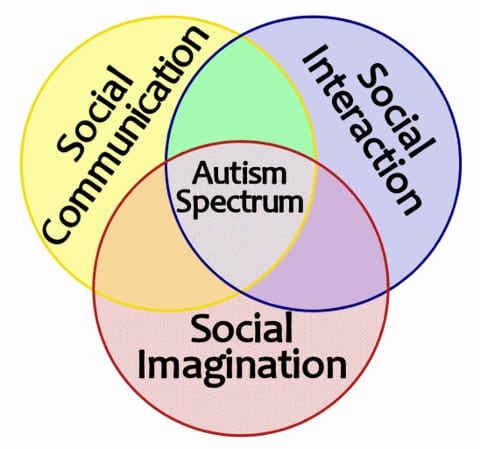
While I appreciate the value it holds for diagnostic practices, to me the Triad of Impairments doesn’t do much else. It doesn’t communicate the experience of being autistic – what it actually means and how it feels. I also don’t consider myself to be impaired.
Autism has a severity scale attached to it that I also don’t find helpful. The scale has 3 levels:
- Autism Spectrum Disorder (ASD) Level 1 (the condition formerly known as Asperger’s Syndrome)
- ASD Level 2
- ASD Level 3
I find this problematic because severity of symptoms doesn’t necessarily represent experience and can lead to misconceptions. Don’t think that because I come in at ASD Level 1 my existence is ‘mild’ or I’m ‘not that autistic’.
Autism is autism. There is nothing mild about it. Autistic people diagnosed at ASD Levels 2 and 3 also aren’t necessarily ‘more impaired’ or ‘worse off’. They might be perfectly happy communicating and interacting with the world differently and that should never be viewed as a problem.
I also find the severity scale somewhat misleading because it creates potential for people without medical knowledge to believe that the autism spectrum is linear which it absolutely is not. Add that to the fact that neither model clearly explains that no two autistic people are exactly the same and you’re left with a bit of confusing mess that doesn’t communicate how it actually feels to be Autistic and the type of support that’s needed.
To fill in this gap (again, please remember I’m not a medical professional), I created my own model to help me explain what I feel it means to be autistic.
I’ve always viewed the spectrum overall as a highly detailed colour wheel with segments of shades, tints and hues.
Take this colour wheel and imagine splitting it into three sections like this and overlaying the Triad of Impairments model.
Drilling down to the next layer, within each of the 3 areas, you can see 4 ‘slices’ – like a pizza. Now I’d like you to imagine that each slice of colour wheel pizza is a high-level autistic trait.
As an example, I’ve chosen the Difficulty understanding ‘unwritten social rules’ trait that lives under Social Interaction. You’ll notice within the pizza slice is a series of segments which make up the hue, shades and tints of the colour yellow.
The segments represent the different ways in which the high-level trait might present in an autistic individual. For example: standing too close to other people, inappropriate conversation topics, eating before everyone else has received their food (it’s illogical to let my food go cold on account of you) and many, many more. In my diagram, each segment holds equal weighting and is about differences, not severity.
Every autistic person has their own unique version of this. Not all autistic people have all the traits but we all come from the same colour wheel pizza. The same trait might also appear in two people but one might experience it more or less intensely than the other. Some autistic people might also have more or less slices in their colour wheel pizza. This is a very high-level way of viewing and communicating the spectrum that I’ve found useful for building awareness and understanding.
Busting myths about autism
There are a number of silly myths about autism that make me want to tear my hair out.
No, I’m not a genius. My IQ is 143 and I did reach my adult reading age when I was 6. But given that UX is full of super smart people, I’m probably quite average. I’m absolutely terrible at maths and I only enjoy the practical experiment fun side of science – I find the reporting and clean up unbearably boring. I’m not a robot. Every single one of my specialised interests is in a creative field. I’m good at music, art, design and writing. I really do have a husband and please, please, please stop asking me about Rain Man.
The biggest and by far most annoying myth of all, is the myth that autistic people lack empathy. That frustrates me because it is the absolute opposite of the truth.
As an autistic person, I experience the world at a heightened level of intensity. I’m hypersensitive to everything in my world: light, sound, colour, textures, shapes, movement, my emotions and the emotions of those around me. Everything hits me in one go like a blastwave and it can take a moment to process and adjust. When I get overwhelmed and the world just gets too much, I experience something called sensory overload. Then I either spin out of control and experience a meltdown or I shut down and completely withdraw.
Autistic people don’t lack empathy. What we lack is the neurological capacity to communicate and cope with empathy overload.
I’ll give you an example. When I hear someone crying, regardless of whether or not I know them, I instantly feel a stab of intense emotional pain. I simultaneously feel panicky, sad and on the verge of tears myself. I’m frozen to the spot because I’m feeling those emotions alongside that other person and I can’t process it all or figure out what to do about it. In that moment, I can’t communicate what’s going on inside me and it can look a lot like I can’t relate or share the feelings of others. In reality, I’ve already related and shared and my brain is shorting out due to excessive emotion flow.
Designing and researching for autistic people
There are a number of assistive technologies and design examples out there for autistic people. The problem is, many of them are for children and most are aimed at changing our communication differences. Designing to change autistic traits rather than to maximise strengths is not helpful. There’s nothing wrong with being autistic. We communicate differently; deal with it.
Focusing design efforts on ‘fixing’ autistic communication differences so that we fit in with everyone else goes against the diverse and inclusive society we all have a right to enjoy. Autistic people are not broken and we don’t need fixing.
This kind of thinking also misses the mark on a vast expanse of design opportunities that would be helpful. What we really need is support and empowerment to just be ourselves. Because everyone deserves to feel safe to be themselves.
Some examples of how UX can empower autistic people include:
- Design that supports our sensory differences or minimises sensory overload
- End to end assistance for complex experiences such as navigating an international airport from booking to boarding and beyond
- Tools to help manage Executive Function related differences in areas such as: planning, time management, problem solving and organisation.
Awesome autism design examples
I’d like to share three amazing examples with you. I searched high and low and there isn’t a lot out there, but these ones are absolutely amazing.
New Struan School (Scotland)
The first one is the design of the New Struan School in Scotland. Schools in Scotland are required to provide a safe and stimulating education environment with a strong focus on inclusive design principles.
The design of the New Struan School took those principles beyond government recommendations to create a specialised environment for autistic people aged 5 to 19. The design of the school was driven entirely by the needs of autistic people. Some of my favourite design elements include:
- A wide, central walkway lit by natural light from a glass atrium ceiling
- Quiet spaces for mental recharging and for taking much-needed breaks from socialising
- No fluorescent lights and adjustable daylight simulators for rainy days
- Large carpeted spaces to absorb sound
- Glass panels on classroom doors
- Curved walls to guide movement from one space to the next (I suspect that might help with acoustics too!)

The New Struan School is for autistic students only – imagine what could happen if this kind of thinking were applied to all types of schools! There are many neurological differences that would benefit from small environmental tweaks that just blend into a seamless design for everyone. Don’t stop at one – I’d like to see this type of thinking applied to mainstream schools and universities too.
Stimtastic (US-based shipping to most countries)
For autistics and by autistics, Stimtastic is an organisation that creates and sells toys and jewellery that supports ‘stimming’. Stimming refers to our need to self-stimulate which kind of looks like fidgeting but is much more than that. When we’re feeling overwhelmed or stressed, stimming helps calm us down. Stimtastic sells a wide range of products and all of their original products are researched and designed with and for autistic people.
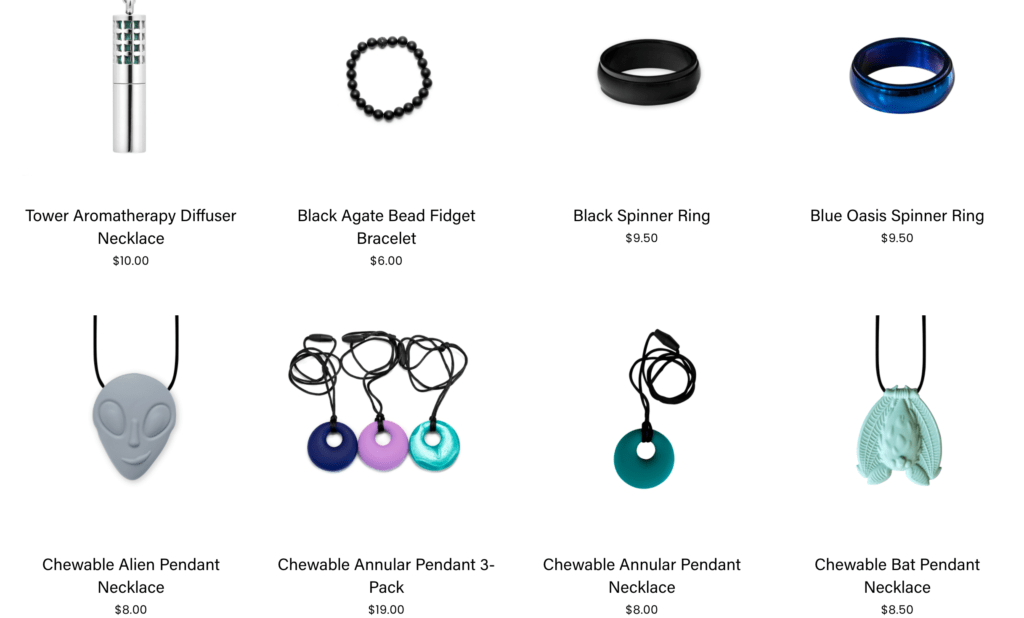
More than just a shop, 5 core principles lie at the heart of Stimtastic:
- Affordability- most products on the website are under $10 USD each with the most expensive item being a $25 USD bike chain bracelet
- Representation- handmade jewellery and handmade toys are crafted by neurodiverse people
- Inclusion – products are not categorised by age or gender and simply provide a detailed description allowing customers to decide what’s best for them
- Giving back – 10% of proceeds from sales goes back into the autistic community
- Celebration – shopping with Stimtastic is fun and in my experience, very human.
I love their fidget jewellery. it’s so subtle and I can wear the thing that’s going to help calm me down without feeling like I need a bigger bag.
Nana’s Weighted Blankets (Australia-based)
Nana’s Weighted Blankets is probably one of the best examples I’ve seen for providing sensory comfort to autistic people. This company was started in 2009 when ‘Nana’ (also known as Sharon) learned that her then 5-year-old grandson, Toby, had been diagnosed with autism. Toby was having a very hard time getting to sleep and he was exhausted. Sharon thought a weighted blanket might help but she couldn’t find anyone here in Australia that made them in a way that was safe, affordable and machine washable – some of the options out there were filled with popcorn. So, she made one herself. And it worked!
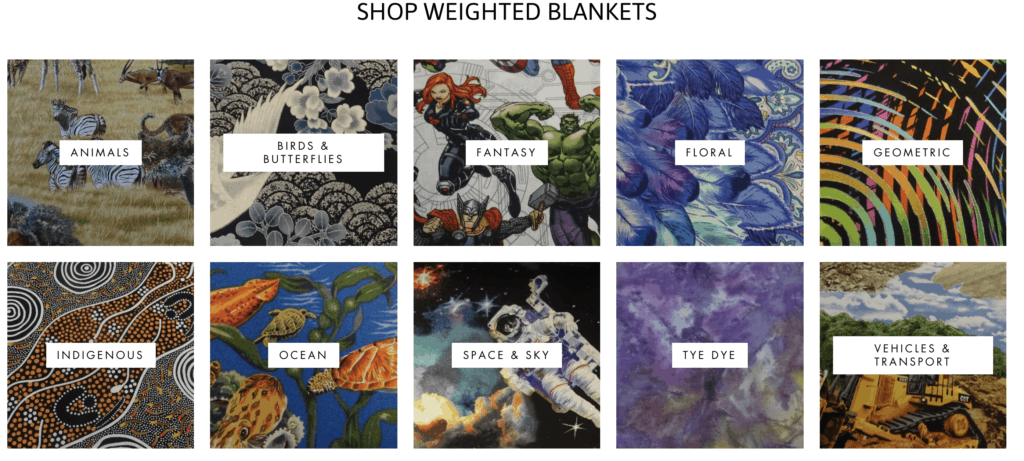
What I love about these blankets is the level of customisation available. The weight, the size, the fabric, the pattern can all be selected and if you want to go heavier than the listed options, all you have to do is send an email.
Tips for designing and researching for autistic people
Here are some key things to keep in mind when you’re designing and researching for autistic people.
When researching for autistic people
- Allow extra time for questions when planning the session
- Conduct the research in a quiet room with natural lighting and recognise that autistic people are quite sensitive to their environment simply by asking “Is there anything I can to make you feel more comfortable?”.
- Treat us like any other participant- we’re just people
- If an autistic person brings a parent or carer with them, speak directly to the autistic person. Our parents and carers do NOT speak for us
- Don’t be put off by our unusual eye contact. Holding eye contact can be quite painful for some autistic people and should never be taken as a sign of disengagement
- Consider not having observers present in the same room. It can be a bit overwhelming- especially when those observers don’t stay silent like they’re supposed to!
- Provide clear, bullet-pointed instructions upfront both written and verbally
- Understand that our facial expressions don’t always match how we feel on the inside – if in doubt just ask!
These tips are of course most useful when you actually know that the person is autistic. You may come across an autistic research participant without realising, so it’s something to keep in the back of your mind. Don’t ask the person outright. They not may be or they may be undiagnosed. Instead, just focus on finding out what you can do to make the person feel comfortable.
When designing for autistic people
- Upfront discovery research is essential and assumptions about our needs and perceived limitations must be avoided.
- Be certain that you are adding value. The market is already flooded with frankly useless apps and online tools for autistic people – do your research and you’ll avoid designing something that simply isn’t needed let alone wanted.
- Don’t design to change autistic traits or try to ‘teach’ us to do something – that is ableist and dehumanising.
- Design for autistic people, not their parents or carers. There are plenty of tools, experiences and support systems designed for parents and carers but there is a significant shortage of useful design for autistic people – especially for autistic adults.
- View autism and other neurological differences the same way you would any other disability – with respect.
- Practice inclusive language: avoid terms like ‘suffers from autism’ ‘trapped by autism’ and the creepiest one I’ve heard so far, ‘touched by autism’ (I can assure you that autism does not go around touching people).
- Do your research before aligning to Autism related organisations – some promote abusive therapies and do nothing more than throw blue puzzle piece themed pity parties for the poor suckers who raised us. Look for organisations that are run for and by autistic people.
- Do design with us to help change perceptions and de-stigmatise autism – co-design, co-design and co-design again!
I’ll leave you with this amazing animated video created by Alex Amelines that explains a bit about what it feels like to be autistic in a really beautiful way.
Do you have experience designing for neurodiverse users? Leave a comment on this post or in the forums.

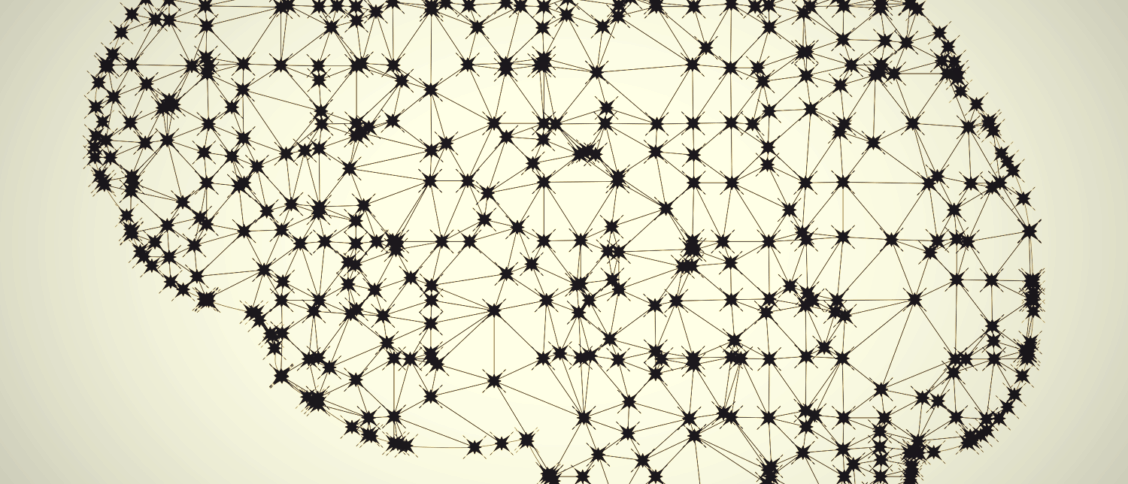



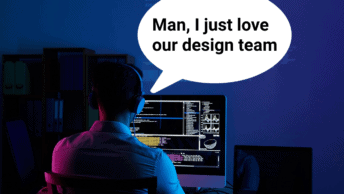

Hi Ashlea,
Marvelous blog! Congratulations!
Just recommended it strongly through twitter (@autitecture)
Flip
architecture-for-autism.org
A great article. It’s encouraging to know another thriving, autistic designer/practitioner out there.
Great article. Thank you. I completely agree with you on empathy. My husband and I both have son’s (from previous marriages) that are HF, as well as 2 others that are NT. Our autistic boys have always displayed more empathy and continue to do so into there young adulthood, a time when most teens have long ago decided to forego any display of human emotion, at least for a time. Thanks for the read.
Alex
Great article, my 4-year-old daughter has just been diagnosed and though I suspected from when she was very young, I am now learning what that actually means for us as a family.
Hi Ashlea,
Great read, nice one. I was searching for tips for user research for people with diverse cognitive needs and, beyond this, found my first autistic UXr. No joke: I wasn’t sure if there were other Aspergic UXr’s out there!
Thanks for finding the time to write this Ashlea – it makes a lot of sense. The bit about empathy especially; feeling overwhelmed and over a few other things too is absolutely not the same as not having empathy.